How Much Should I Feed My Dog? (Feeding Guide Included)
The question of how much to feed your dog is a common one, and for good reason. It’s a big decision that will impact your dog’s overall health and longevity.
Your pup’s needs depend on their age, weight, activity level, and metabolism.
But you’re in luck, because this article will teach you how to find that happy balance between “too much” and “not enough,” so you can feed your dog just the right amount of food.
How Much Should I Feed My Dog?
How do I know if my dog needs more or less food?
Being underfed can lead to nutrient deficiencies, malnourishment, and being underweight.
If you overfeed your dog, they might become obese which can lead to many health problems such as:
- Compromised immune system
- Heart failure
- Diabetes
- Cancer
- Skin problems
- Reduced liver function
- Issues with joints, ligaments, hips, etc.
- Reduced life expectancy
Factors When Considering How Much Food for Your Dog
When deciding how much to feed your dog, these are the important variables to keep in mind:
- Size of dog
- Age of dog
- Activity and energy levels
- Medical conditions
- Brand of dog food
If your dog does have a medical condition, it’s best that you work with your vet when determining the right feeding regimen for your dog’s situation. But if not, understanding key factors that determine how much food is enough, is crucial to giving your dog a long and healthy life.
A Guide for How Much Food to Feed Your Dogs
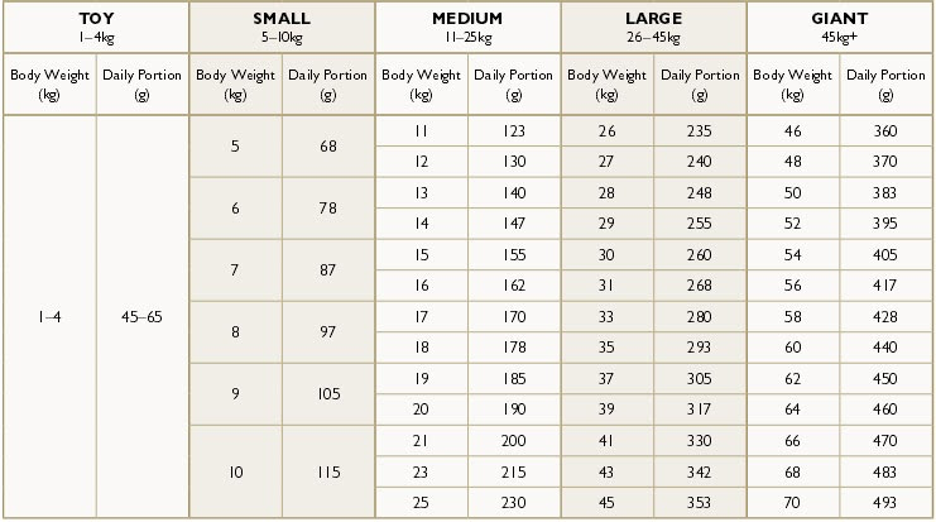
This American Bully Feeding Chart gives a general idea of how much to feed your dog based on their size. Keep in mind that most dog food products will come with their own feeding charts, so be sure to check the packaging—because it will be more specific to that brand of food.
You can also try the World Small Animal Veterinary Association Body Condition Score for Dogs, a visual guide that can help you determine if your dog is overweight, underweight, or at a healthy weight.
You’ll generally split your dog’s daily food amount in half, for two meals a day. There are some exceptions though. Highly active puppies may need 3 or more meals a day, and some dogs with certain medical conditions may have to follow special feeding protocols as well.
In that case, simply divide your daily amount of dog food by the number of meals you plan to serve your dog to get your portion size per meal.
Here at Bully Max, we produce a high-quality, high protein dog food that you’ll definitely want to check out if you haven’t already. It’s an all-life-stages formula that’s packed full of healthy, human-grade ingredients. It’s also got a whopping 535 calories per cup, which means you can feed your dog a smaller quantity of food and still meet their calorie needs.
Our dog food also includes a helpful feeding guide on the packaging that will help you to determine what portion size is just right for your dog:
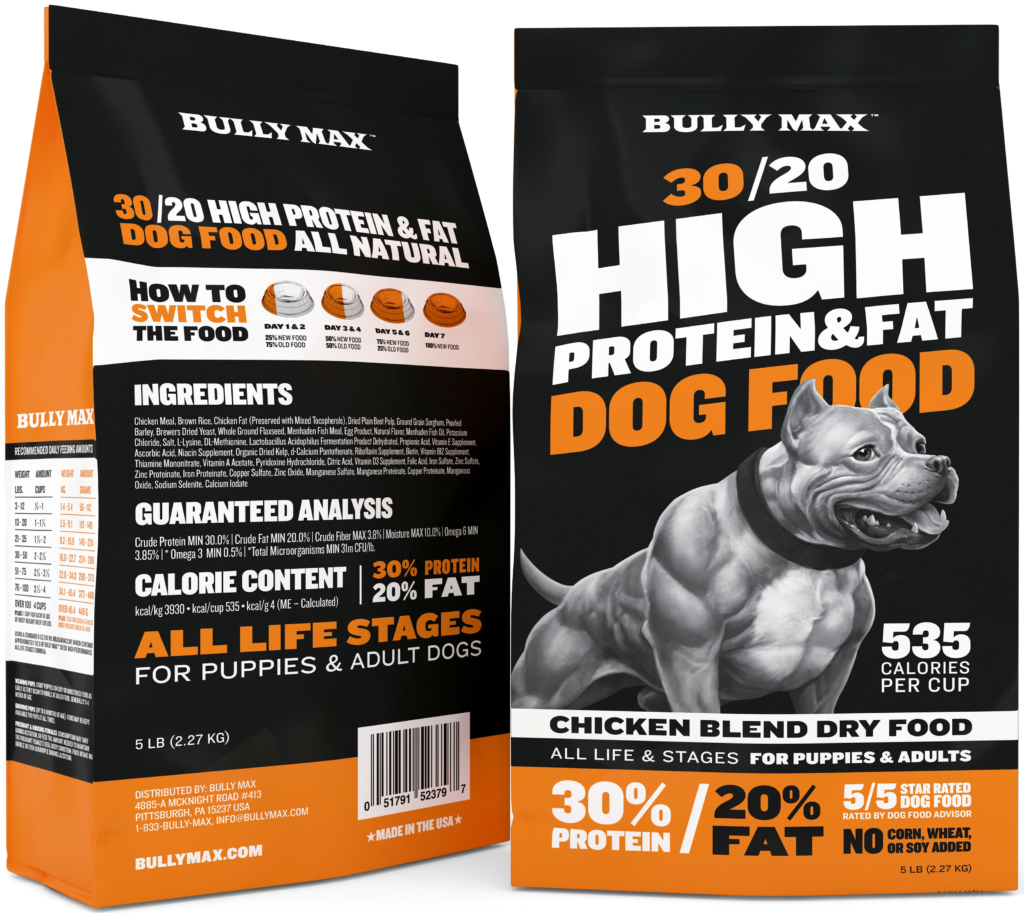
Raw food can also be a healthy choice in some cases. If this interests you, check out our article on raw dog food for beginners to learn how to get started.
How Much Should Dogs Eat Based on Age?
Young dogs will have different dietary needs than older dogs.
To support healthy growth and the healthy development of organs and bones, puppies need to consume more food than adult dogs. Puppies require more protein and fat than an adult dog of the same size and weight, and they also have to consume higher concentrations of particular nutrients and minerals.
Let’s discuss how age plays a role in determining how much to feed your dog.
How Much Should I Feed My Puppy?
Meeting your puppy’s dietary needs is extremely important. During these formative months you are creating a foundation of health that will make a real difference for years to come.
During the first couple months of life, let your puppies nurse on their mother’s milk freely. After the first month puppies should also be fed small, easy-to-digest meals frequently throughout the day.
Over the course of 2 or 3 months you will gradually transition your pup off of the milk completely and onto two dry meals a day. You may start with 3 or 4 smaller meals per day and work your way down to 2.
Keep in mind that puppies often need to eat twice as much (or more) as an adult dog of the same size. Most puppy food products have appropriate feeding guides on the packaging.
Remember to consider your pup’s activity levels as well when determining how much food to give her.
How Much Should I Feed my Adult Dog?
A dog is considered an adult when it has reached 90% of its expected fully grown adult size. The age your dog will reach this size can vary from 8 months old to almost 2 years depending on your dog’s breed.
(Here’s more information on when to make the transition from puppy food to adult dog food.
A standard adult dog’s diet is referred to as a maintenance diet. An adult dog’s diet no longer needs to fuel rapid and intense growth spurts. Instead,now it serves to simply maintain balance and health.
How Much Should I Feed My Dog Based on Activity Level?
If your furry friend leads a very active lifestyle, you may have to provide more food than the feeding guide on your dog food suggests. Likewise, if your dog doesn’t get out much and spends most of her time on the couch, you may feed less than the label suggests.
You can add or subtract 10%-30% to your dog’s daily food portions as needed based on personal activity levels.
Just take care not to overfeed! People have a tendency to overfeed more often than underfeed, and some feeding charts are actually a bit on the heavy side.
There are several ways to determine whether or not your dog is at a healthy weight.
Your dog’s ribs shouldn’t be visibly poking out, but when you pet your dog’s sides you should easily be able to feel the ribcage. Being unable to feel your dog’s ribs is an indication that your dog is overweight and would benefit from losing a few pounds.
Another sign of being at a healthy weight is that your dog’s chest should be closer to the ground than their stomach is while standing. A healthy dog also should have that “hourglass shape” from above, their stomach being more narrow than their hips and shoulders.
If you’re concerned that your pup has lost an unhealthy amount of weight, check out our article on the causes and solutions of sudden weight loss in dogs.
How Much Should I Feed My Dog Based on Size?
Here are some guidelines we’ve put together for you based on your dog’s size and weight. Note that it’s important you actually weigh your dog rather than eyeball portion sizes based on appearance.
(Measurements based on standard 8 oz. measuring cup.)
Small Dogs (3 – 20 lbs)
We’ll define a small dog as any dog that weighs 20 lbs or less. So we’re talking cute little breeds like Pomeranians, Pugs, Chihuahuas, Yorkshire Terriers, Dachshunds, Shih Tzus, etc.
Small doggies weighing in between 3 and 12 pounds will need to eat ½ to 1 cup of food per day. If your dog weighs between 13 and 20 pounds, you’ll have to provide 1 to 1 ⅓ cups of food each day.
Medium Dogs (20 – 50 lbs)
Breeds such as Collies, Bull Terriers, Beagles, Schnauzers, Cocker Spaniels, and Australian Shepherds would all be considered medium-sized dog breeds. Medium-sized dogs will generally weigh more than 20 lbs and less than 50.
If you have a furry friend who’s between 21 – 35 pounds she’ll need to be fed approximately 2 cups of food per day. A dog weighing in from 36 to 50 pounds will need to eat between 2 and 2 ½ cups per day.
And do remember to weigh your dog. Your dog may be above or below the typical weight for her breed and you might have to adjust her portion-sizes to accommodate for this.
Large Dogs (50+ lbs)
Now we’re talking dog breeds like German Shepherds, Alaskan Malamutes, Pitbull Terriers, Boxers, Dalmatians, Golden Retrievers, Huskies, etc.. All dogs weighing in at 50 lbs or (sometimes a lot) more.
Large dogs need to be fed at least between 2 ½ and 4 cups of food per day, and sometimes more than that.
Doggies weighing in between 51 and 75 pounds need between 2 ½ – 3 ⅓ cups of food per day. Cute canines weighing in between 76 and 100 pounds will need to eat 3 ⅓ to 4 cups of food each day.
Now when feeding dogs that weigh over 100 pounds, provide 3 ⅔ cups of food per day plus ½ cup of food for each 10 lbs of body weight over 100 lbs.
Dog Feeding Schedule
The best approach is to get your dog into a routine feeding schedule. This will keep them at a healthy, happy weight.
Puppies can be fed more frequently throughout the day for the first couple months of life; 3 or 4 meals per day is fine. All healthy dogs older than 3 months should be eating two meals a day, one in the morning and one in the evening.
It is also acceptable to feed your dog just once a day so long as you provide them with everything they need. However, we strongly advise against free-feeding, or leaving out a dish of food all times of the day.
This is important to avoid because you want to be able to monitor how much food your dog is or isn’t eating. You also want to keep the size of their meals consistent. And if you have multiple pets you want to keep an eye on who’s eating what.
It’s best to get into a routine of feeding your dog at the same time each day. The more consistent you can keep it on a daily basis the better. Check out our dog feeding schedule guide.
If Unsure About Your Dogs Portions, See a Vet
It can be a little confusing at first, but stick with it and you’ll have your dogs on an ideal feeding schedule in no time!
Just remember to weigh your dog, and to always measure out your portion sizes. Factor in age and activity levels when calculating your portion sizes, and keep in mind that every brand of dog food is a little different as far as serving sizes and calories go.
And if you’re still unsure about your dog’s portion sizes, you should talk to your vet.
They can help to clear up any confusion and aid you in tailoring your meals and portion sizes to meet your dog’s specific needs.
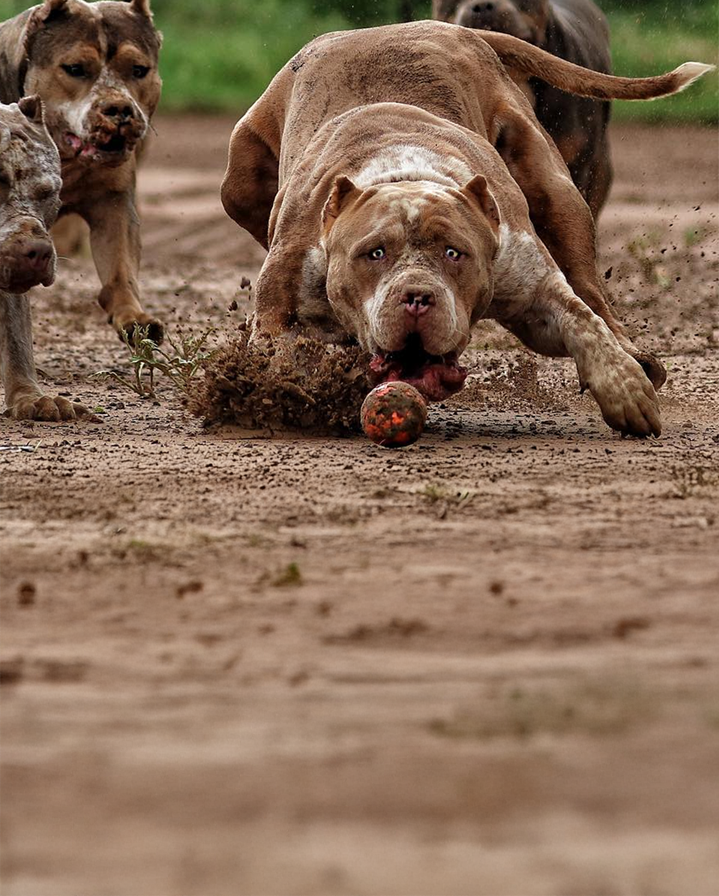
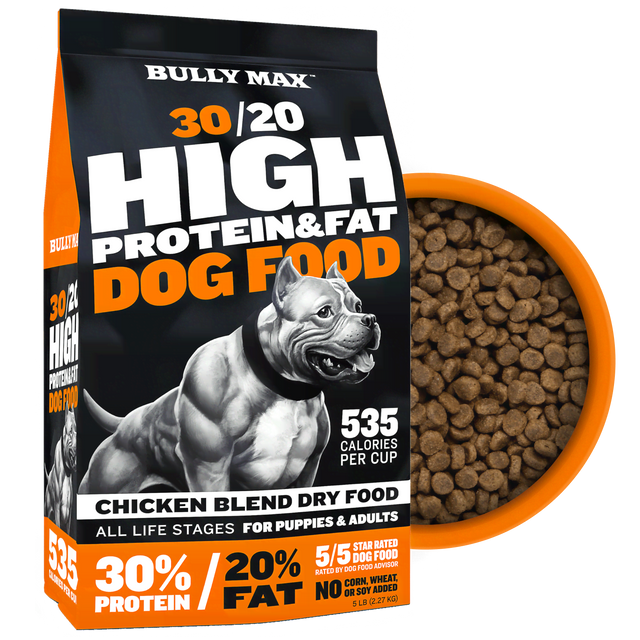
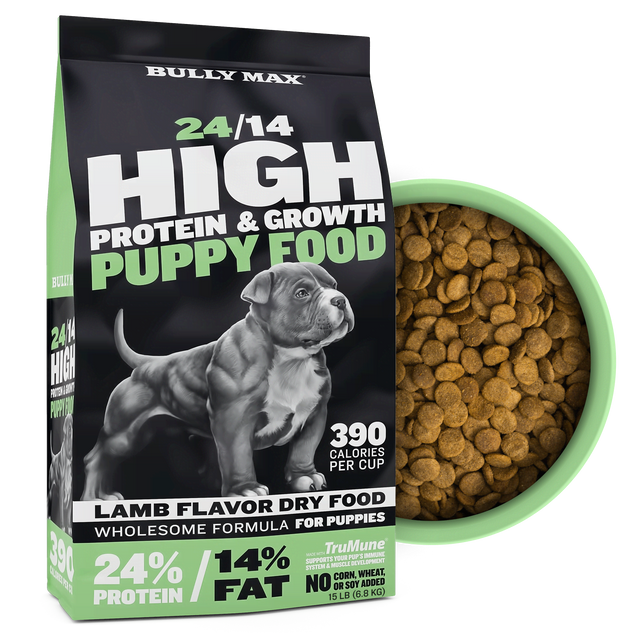
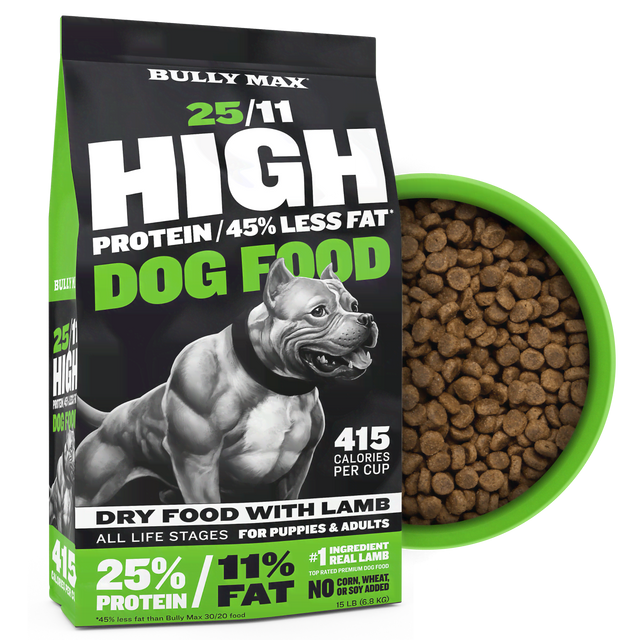
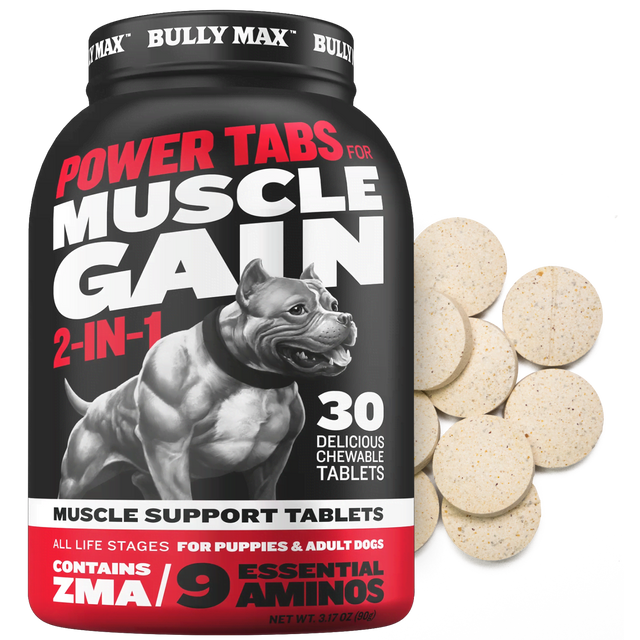




4 comments
I have a 2 year old bully pit bull mix what’s the best dog food to him for muscle health and immune support
I have a 4 month old English bulldog puppy she weights about 17lbs. I want to put her on bully max puppy food 24% protein/14% fat. What should her servings look like per day?
68 pound old English bulldog. Three years old what is the feeding portions per day?
Dogs tend to live for about 10 to 13 years. But there are few scientific studies into dog lifespans and life expectancy also depends on breed and size.